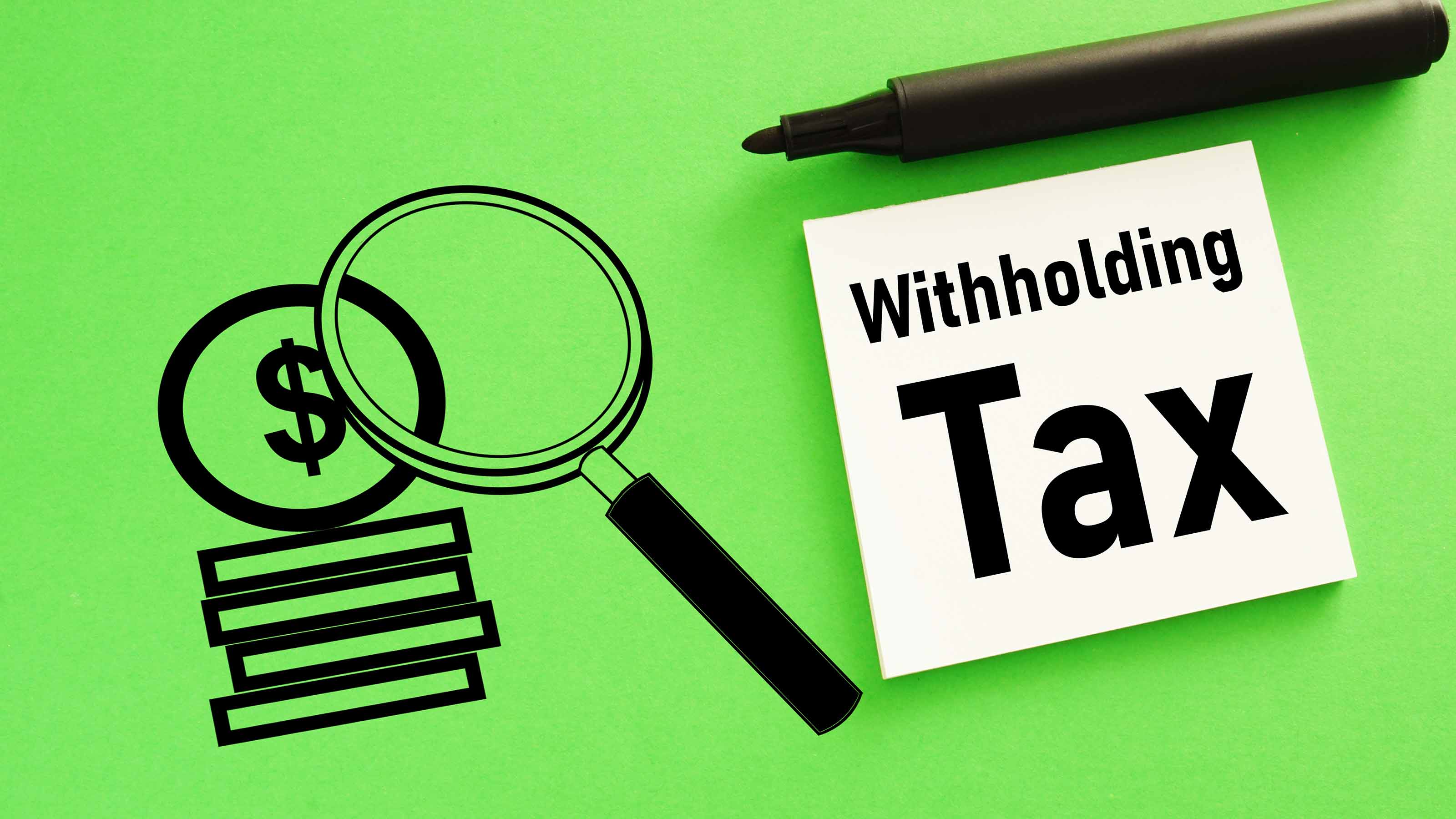10 Tax Planning Tips for the End of the Year
Tax planning between now and the end of the year can have a significant impact on how much tax you have to pay next April.


Financial decisions you make between now and the end of the year can have a significant effect on how much tax you have to pay next April. This is particularly true if you're saving for retirement, itemize deductions, or hold investments outside a retirement account.
But time is running short. It will be too late to cut your tax bill using most of the tips we've assembled below after we ring in the new year. So check out our list right away and get cracking!

Check Your Withholding
If you were hit with a big tax bill this year because you didn't have enough money withheld from your paycheck, you may be able to take steps between now and year-end to avoid another April surprise. Use the IRS's Tax Withholding Estimator as soon as you can to determine whether you should file a new Form W-4 with your employer and increase the amount of taxes withheld from your paycheck before the end of the year. You'll need your most recent pay stub and a copy of your 2021 tax return to help estimate your 2022 income. If it looks like you're going to owe money when you file your next tax return, the IRS tool will tell you how much "extra withholding" you should put down on Line 4(c) of Form W-4 to catch you up on withholding for the year. Then, early next year, complete another W-4 for withholding in 2023.
In general, you don't have to worry about a penalty if you owe less than $1,000 after subtracting withholdings and credits, or if you paid at least 90% of the amount of tax due for the current year or 100% of taxes due the previous year, whichever is smaller.

Consider Paying 2023 Bills Now
Unless your finances have changed significantly, you probably have a pretty good idea whether you'll itemize or claim the standard deduction when you file your 2022 tax return. If you plan to itemize — or you're close to the threshold — now is a good time to prepay deductible expenses, such as mortgage payments and state taxes due in January. Other moves to make by New Year's Eve:
Review your medical bills. If you have enough unreimbursed medical expenses, you may be able to deduct them. You can only deduct unreimbursed medical expenses that exceed 7.5% of your adjusted gross income. That puts this tax break out of reach for most taxpayers, but if you had extraordinarily high medical expenses this year — due to a major illness or a chronic condition, such as long Covid, for example — you may qualify.
And there's still time to schedule appointments and procedures that will increase the amount of your deductible expenses. The list of eligible expenses includes dental and vision care, which may not be covered by your insurance. For the complete rundown, go to IRS Publication 502.
Pay property taxes early. Itemizers can deduct up to $10,000 in state and local taxes. If you haven't maxed out for the year and your municipality allows it, pay the property tax bill due in January in December so you can deduct it from your 2022 taxes.
Prepay tuition. If you're the parent of a college student, you may be able to lower your 2022 tax bill by prepaying the first quarter tuition bill — and you don't need to itemize to claim this tax break. The American Opportunity Tax Credit, which you can take for students who are in their first four years of undergraduate study, is worth up to $2,500 for each qualifying student. Married couples filing jointly with modified adjusted joint income of up to $160,000 can claim the full credit, while those with a MAGI of up to $180,000 can claim a partial amount.
Likewise, if you're planning to take a class next year to boost your own career, consider prepaying the January bill before December 31 so you can claim the Lifetime Learning Credit on your 2022 tax return. The credit is worth up to 20% of your out-of-pocket costs for tuition, fees and books, up to a maximum of $2,000. It's not limited to undergraduate expenses, and you don't have to be a full-time student. As with the American Opportunity Tax Credit, married couples filing jointly with MAGI of up to $160,000 can claim the full credit, while those with a MAGI of up to $180,000 can claim a partial credit.

Contribute to a 529 Plan or ABLE Account
Stashing money in a 529 plan before year-end won't reduce your federal tax bill, but it could lower your state tax tab. More than 30 states allow you to deduct at least a portion of 529 plan contributions from state income taxes. In most states, you must contribute to your own state's plan to get the tax deduction, but several states allow you to deduct contributions to any state's plan. Check out your own state's rules at savingforcollege.com. Many states allow grandparents and others to contribute to your child's plan, and a few will allow them to deduct those contributions, too.
If someone in your family has special needs, you can contribute up to $16,000 this year to an ABLE account, which allows people with qualifying disabilities to save money without jeopardizing government benefits (ABLE account beneficiaries can contribute more to their own account). You don't have to invest in your own state's plan, but if you're a resident of one of the states that do offer a tax break for ABLE accounts, you can deduct your contribution. Michigan, for example, allows residents who contribute to its ABLE account to deduct up to $5,000 (or $10,000 for a married couple). For more information, go to the ABLE National Resource Center's website.

Reap the Tax Harvest
The tax code allows you to sell investments that have fallen below your purchase price and use the resulting loss to offset capital gains in taxable accounts. That's a compelling reason to consider jettisoning your losing positions. Investments that you've held for a year or less are taxed as ordinary income, but investments you've held longer are taxed at the long-term capital gains rate, which ranges from 0% to 23.8% (including the 3.8% surtax on net investment income).
After matching short-term losses against short-term gains, and long-term losses against long-term gains, any excess losses can be used to offset the opposite kind of gain. If you still wind up with an overall net capital loss, you can use up to $3,000 of that loss to offset ordinary income and roll the rest over to the following year. Note that once you sell an asset at a loss, the "wash-sale" rule requires you to wait 30 days before reinvesting in it or buying a substantially identical investment.
For 2022, lower-income investors (i.e., with income less than $41,675 for single filers and $83,350 for joint filers) pay no capital gains tax on investments held for more than a year. If that's the case, it may make sense to sell winning investments tax-free and reinvest (no need to wait 30 days), effectively resetting the odometer on future gains.
Also note that mutual funds are required to pay out to their shareholders any gains realized from the sale of stocks or bonds during the year. If you own the fund in a taxable account, you must pay taxes on these distributions when you file your tax return, even if you reinvest them. Given the poor performance of the stock market this year, you may not think this will be a problem. But some funds were still sitting on large gains from 2021 and may have been forced to sell some of those winners to meet investor outflows. As a result, you could get hit with a capital gains distribution even if your fund lost money this year.
If you do get hit with a distribution, review your portfolio to see if you have any mutual funds, stocks or bonds that have declined in value since you purchased them. Selling them before year-end will provide losses to offset your gains. Mutual funds typically publish an estimate of their capital gains distributions in November or December, along with the date of the distribution. Estimates are on a per-share basis, so if you figure out how many shares you have, you can gauge the size of your distribution.
Interested in buying a fund before the end of the year? Check its website first. If the fund plans to make a capital gains distribution, postpone your purchase until after the distribution date. Otherwise, you'll have to pay taxes on gains racked up before you got on board.

Max Out Your Employer's Retirement Savings Plan
As the year comes to a close, you may be able to squeeze a little more money from each paycheck for your retirement savings. You can contribute up to $20,500 to a 401(k), 403(b) or federal Thrift Savings Plan in 2022, plus $6,500 in catch-up contributions if you're 50 or older.
Pretax contributions will lower your take-home pay and reduce your tax bill. If your employer offers a Roth 401(k), you can make contributions that won't lower your taxable income now but that can be withdrawn tax-free in retirement. If your employer offers both types of plans, you can direct new contributions to the Roth 401(k) rather than the pretax 401(k) at any time.
Contact your 401(k) administrator or your employer's human resources department ASAP to find out how much you're on track to contribute to your 401(k) by the end of the year and to ask about the steps you need to take to boost your contributions. The earlier you make the change, the better: 401(k) contributions are made through payroll deduction. If you're contributing on your own to a traditional or Roth IRA for 2022, you have until April 18, 2023.
If you aren't on track to max out your retirement account for the year, adding money from a year-end bonus can be a great way to boost your contributions without affecting your regular take-home pay. Rules vary, and some plans don't allow participants to contribute their bonus. Also make sure that you don't cross the annual contribution limit. You have until the tax-filing deadline to withdraw any extra contribution and the earnings on it, which will both be taxable. If you don't take it out, the excess contribution will be taxable now and you'll have to pay taxes on it again when you finally withdraw the money.

Use Your Side Hustle to Boost Retirement Savings
If you have self-employment or freelance income, open a solo 401(k) plan. You must open it by December 31, although you have until April 18, 2023, to contribute and take a tax deduction for 2022. You can contribute up to $20,500 ($27,000 if you're 50 or older) to a solo 401(k), minus any contributions you've made to a 9-to-5 employer's 401(k) for the year. You can also contribute up to 20% of your net self-employment income to the plan. Contributions to the solo 401(k) can total $61,000 in 2022 (or $67,500 if 50 or older), but they can't exceed your self-employed income for the year.
Another option is to open a Simplified Employee Pension (SEP) account. However, if you have just a little freelance income, you can contribute more money to a solo 401(k). SEP contributions are limited to 25% of net self-employment income, up to $61,000.

Open a Donor-Advised Fund
Putting your money or other assets, such as stocks or personal property, in a donor-advised fund allows you to deduct the entire contribution in the year you make it and decide later how you want to dole out grants to charities of your choice. You can open a donor-advised fund at financial-services firms such as Fidelity Charitable or Schwab Charitable or at community foundations. Contributing one lump sum this year may help lift your deductions above the standard deduction amount and allow you to itemize.

Max Out Charitable Donations (and Declutter)
If you itemize, donating clothes, kitchenware or furniture you no longer need can boost your deductions while helping a worthy cause. You'll base your deduction on the donated item's "fair market value" (or what it might sell for at a thrift or consignment shop) — you can use online tools such as TurboTax's ItsDeductible tool to estimate this value. You will need a written acknowledgment from the organization if you are claiming a contribution of $250 or more (consider snapping a photo of the donation for your records). For donated items valued at more than $5,000 (art, antiques, etc.), plan on providing a written appraisal. For the 2022 tax year, you can deduct cash donations of up to 60% of your adjusted gross income.

Transfer IRA Money to Charity
Taxpayers who are 70½ or older can transfer up to $100,000 from a traditional IRA tax-free to charity each year, as long as they transfer the money to the charity directly.
This is a nice benefit for IRA owners who are 72 or older, because the distribution counts as your required minimum distribution. In addition, a "qualified charitable distribution" will reduce the size of your IRA, which will reduce future required withdrawals, and your tax bill too. Plus, the transfer could help keep your income below the threshold at which you're subject to the Medicare high-income surcharge as well as hold down the percentage of your Social Security benefits subject to tax.
If you decide to make a QCD, do it well in advance of New Year's Eve. To qualify for the tax break, the money has to be out of the account and the check needs to be cashed by the charity by December 31.

Consider a Roth Conversion
Consider converting some money from a traditional IRA to a Roth IRA this year, up to the top end of your income tax bracket, especially if you believe your taxes may go up in the future. You'll pay taxes on the conversion (minus any portion that represents nondeductible IRA contributions), but the money will grow tax-free in the Roth after that. Converting your entire traditional IRA balance can bump you up to a higher tax bracket, but you can spread conversions over several years.
Be careful about making a large conversion if you're within two years of signing up for Medicare — you'll have to pay extra for Medicare Part B if your adjusted gross income (plus tax-exempt interest income) is more than a certain amount. For example, if your 2020 income was $91,000 or more if you're single, or $182,000 or more if you're married filing jointly, your 2022 Medicare Part B costs are higher. Your last tax return on file determines your Medicare premiums, so a 2022 conversion could affect 2024 premiums.
Profit and prosper with the best of Kiplinger's advice on investing, taxes, retirement, personal finance and much more. Delivered daily. Enter your email in the box and click Sign Me Up.

Block joined Kiplinger in June 2012 from USA Today, where she was a reporter and personal finance columnist for more than 15 years. Prior to that, she worked for the Akron Beacon-Journal and Dow Jones Newswires. In 1993, she was a Knight-Bagehot fellow in economics and business journalism at the Columbia University Graduate School of Journalism. She has a BA in communications from Bethany College in Bethany, W.Va.
-
 What Netflix Stock's 10-for-1 Split Means for Investors
What Netflix Stock's 10-for-1 Split Means for InvestorsNetflix announced its long-awaited stock split after Thursday's close. NFLX will start trading on a split-adjusted basis ahead of the November 17 open.
-
 Stocks Sink with Meta, Microsoft: Stock Market Today
Stocks Sink with Meta, Microsoft: Stock Market TodayAlphabet was a bright light among the Magnificent 7 stocks today after the Google parent's quarterly revenue topped $100 billion for the first time.
-
 Three Critical Tax Changes Could Boost Your Paycheck in 2026
Three Critical Tax Changes Could Boost Your Paycheck in 2026Tax Tips The IRS predicts these tax breaks may change take-home pay in 2026. Will you get over $1,000 in tax savings?
-
 RMDs, Roth, and SS: Test Your Knowledge of Retirement Tax Rules
RMDs, Roth, and SS: Test Your Knowledge of Retirement Tax RulesQuiz Don't let the IRS catch you off guard. Take our quiz to reveal common retirement tax rules that could save (or cost) you thousands.
-
 IRS Reveals New 2026 Child Tax Credit and other Family Credit Amounts
IRS Reveals New 2026 Child Tax Credit and other Family Credit AmountsTax Credits Key family tax breaks are higher for 2026, including the Earned Income Tax Credit and the Adoption Credit. Here's what they're worth.
-
 Claiming the Standard Deduction? Here Are Five Tax Breaks for Retirement in 2025
Claiming the Standard Deduction? Here Are Five Tax Breaks for Retirement in 2025Tax Tips If you’re retired and filing taxes, these five tax credits and deductions could provide thousands in relief (if you qualify).
-
 IRS Names Its First CEO: But He’s Also Still Running Social Security
IRS Names Its First CEO: But He’s Also Still Running Social SecurityTax News Will this new role make it difficult to address emerging issues like budget and staffing cuts and customer service concerns?
-
 Three Popular Tax Breaks Are Gone for Good in 2026
Three Popular Tax Breaks Are Gone for Good in 2026Tax Breaks Here's a list of federal tax deductions and credits that you can't claim in the 2026 tax year. High-income earners could also get hit by a 'surprise' tax bill.
-
 IRS Phasing Out Paper Checks: What Happens After September 30?
IRS Phasing Out Paper Checks: What Happens After September 30?Tax Changes Avoid delays when IRS tax refunds and Social Security paper checks are cut off. Here’s what to know.
-
 Ask the Editor, September 12: Tax Questions on 529 Plan Rollovers to a Roth IRA
Ask the Editor, September 12: Tax Questions on 529 Plan Rollovers to a Roth IRAAsk the Editor In this week's Ask the Editor Q&A, we answer four questions from readers on transferring 529 plan money to a Roth IRA.
